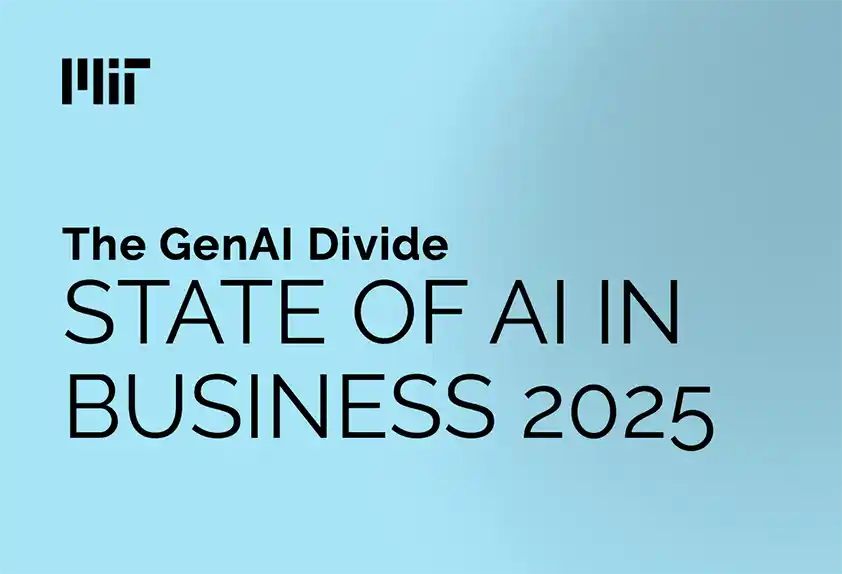A landmark MIT report titled "The GenAI Divide: State of AI in Business 2025" reveals a startling result: 95% of generative AI pilot programs fail to produce meaningful business outcomes. Despite massive investments (e.g., more than $44 billion poured into AI startups and enterprise tools in just the first half of 2025), the vast majority of projects fall short of delivering measurable ROI or productivity gains.
Why are Gen AI projects flopping?
-
Misaligned expectations & poor integration: Many tools don’t mesh well with existing systems or workflows, undermining performance.
-
Scope creep: Companies often chase broad AI implementations, rather than focusing narrowly on a specific, high-value problem.
-
Overemphasis on flashy use‑cases: The bulk of AI budget, especially in sales and marketing, is misallocated, whereas automation-heavy areas like back-end operations yield far better ROI.
-
Cultural and systemic readiness gaps: Success hinges not just on tech, but on adapting processes and team structures to produce real results.
The Bright 5%: What Sets Successful AI Pilots Apart
Only a small fraction of firms, roughly 5%, are achieving rapid revenue acceleration with GenAI. These winners share a few key traits:
-
Laser-focus on one problem, done well.
-
Smart, targeted partnerships with specialized vendors, rather than generic in-house builds.
-
Empowered line managers who select flexible tools tailored to evolving needs.
-
Budget allocations anchored in back-end automation, rather than hype-driven front-end use cases.
Vendor-led projects show markedly better outcomes. This is important: specialized AI partnerships succeed approximately two-thirds of the time, which is more than double the success rate of in-house implementations.
What This Means for You
Here's how the MIT findings translate into actionable guidance:
| Challenge | Lean & Vendor-Backed Strategy |
|---|---|
| High failure rate (95%) | Partner with vendors experienced in AI-enabled content management, ops and/or delivery (e.g., CrafterCMS, CrafterQ). |
| Integration issues | Choose solutions designed to slot into existing pipelines and DevOps toolchains. |
| Diffuse scope | Start with one core use case (e.g. augmenting content creation, or conversational AI experiences), prove its value, then expand. |
| Focus in wrong areas | Prioritize operational automation over flashy front-end AI features. |
| Internal build complexity | Lean on vendor frameworks that come with best practices, integration patterns, and support. |
Spotlight: Vendor Advantages - CrafterCMS & CrafterQ
-
CrafterCMS provides an AI-enabled headless CMS and content platform built to fit seamlessly into both content and DevOps workflows, enabling continuous integration, delivery, and publishing.
-
CrafterQ brings a conversational AI chatbot and agent platform that integrates with content platforms, websites, and many other digital channels.
By working with these kinds of vendors:
-
You benefit from higher success rates, reflecting the 67%+ win rate observed in the MIT study.
-
You reduce the risk and overhead of building and maintaining custom AI systems internally.
-
You ensure smoother adoption by leveraging tools designed for iterative, agile DevOps environments.
Summary
The MIT report is a critical wake-up call: generative AI isn’t a magic bullet for enterprise transformation. Most pilot programs stall. However, those that succeed tend to:
-
Focus on well-defined use cases
-
Engage with specialized vendors
-
Align tools to internal workflows and empower domain leaders
If you're targeting AI-infused DevContentOps success, your formula should be:
-
Start small—solve one repeatable problem.
-
Partner smart—leverage AI-enabled vendor platforms that align with DevOps.
-
Iterate—deploy, measure, refine, then expand impact-range.
This strategy offers you a much clearer path to joining that elite 5% that truly deliver on GenAI’s promise.

 Tom Jackson
Tom Jackson




